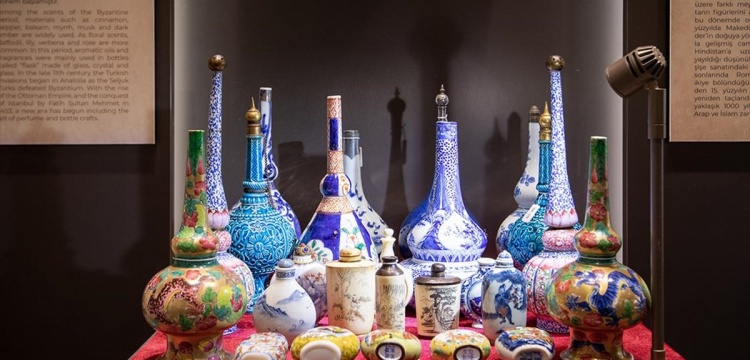Bekir Kantarcı's historical fragrance collection is exhibited in the Perfumery museum
Kantarcı, the founder of the Perfumery Museum, stated that he became interested in antique works while doing academic studies after university and that he created his collection with more than 10 thousand perfume bottles he collected from different countries in the last 35 years.
Stating that there are more than 50 perfume museums in the world, Kantarcı said that they opened the museum with the products he collected over the years and said, "It was an ideal for me to bring a scent museum to Istanbul, to Türkiye."
Bekir Kantarcı underlined that they explained the history of scent and scent raw materials to visitors with examples and said, "We tried to reflect here here from the scent making of the Ottoman period to the present day, the Republic period, the interesting scent works of the last period of the Ottoman Empire, the Ottoman palace scent making and all this process with historical information. Of course, we also went through a 3-year academic process while doing these. We compiled information from our expert professors and source works, especially on this subject, and wrote texts in English and Turkish."
- Noting that the museum location is quite popular with tourists, Kantarcı gave the following information: "The Grand Bazaar, Sandal Bedesten is one of the oldest structures in Istanbul. It was very meaningful for us to choose this place. On the other hand, it is also where the old Ottoman trade life took place. These are the points where art, culture and the perfumery of that period were exhibited the most. Evliya Çelebi mentions that there were more than 500 perfume shops around the Grand Bazaar. Especially if we take into account the Istanbul of that period, he records around 1500 perfume shops in the whole of Istanbul in his work. Perfumery is an art of scent that has been lost to the present day from such a rich scent civilization. In this sense, our museum has very serious meanings."
Stating that perfume bottles are made from many different materials, Kantarcı said:
"Examples of these that we have are bottles made by carving very valuable stones such as agate and amethyst. In addition, since the raw materials of scent used 300-400 years ago were completely natural and these raw materials were extremely expensive, scent bottles were also designed as an object of art. They were made one by one, with long years of labor and hand workmanship. When we examine these bottles, we see that they are also adorned with very valuable ornaments, engravings, carvings and very valuable stones such as gold, emeralds and rubies. We have collected examples of these as well. For example, we have a few bottles made of very rare ivory. Each one is a work of art. Again, there are Chinese porcelain and rose water burners produced for the Ottoman market 300-400 years ago. Silver incense burners, indispensable for the Ottoman Empire and sought after in all museums of the world, are also here. The most important feature of the works we have is that they have the special signatures of the reigns of Mahmud II, Abdülmecid and Sultan Abdülhamid."
Kantarcı added that the distillation equipment from the workshop of Ahmet Faruki, who produced the first local perfume and cologne in the Ottoman Empire, and the perfume and cologne bottles from Hasan Şevki, one of the first perfumers of the Ottoman Empire, can be seen in the museum, and that Beykoz-made scent bottles from the 1800s are also exhibited in the museum.
The museum aims to inform its visitors about the history of perfume art, old-fashioned production methods, original raw materials, fragrance families, characteristics and varieties, as well as to introduce iconic periods and fragrances in history to new generations through its perfume collections.
News Link: Bekir Kantarcı's Historical Fragrance Collection is on Display at the Perfumery Museum
Author: Archaeological News


Share:
Anadolu Agency | How Did Collector Bekir Kantarcı Bring Together the "Kaaba Covers" He Exhibited? - 25/03/2025
Sabah | “Ottoman to Present Fragrance Bottles” Exhibition Opened at the Turkish and Islamic Arts Museum -